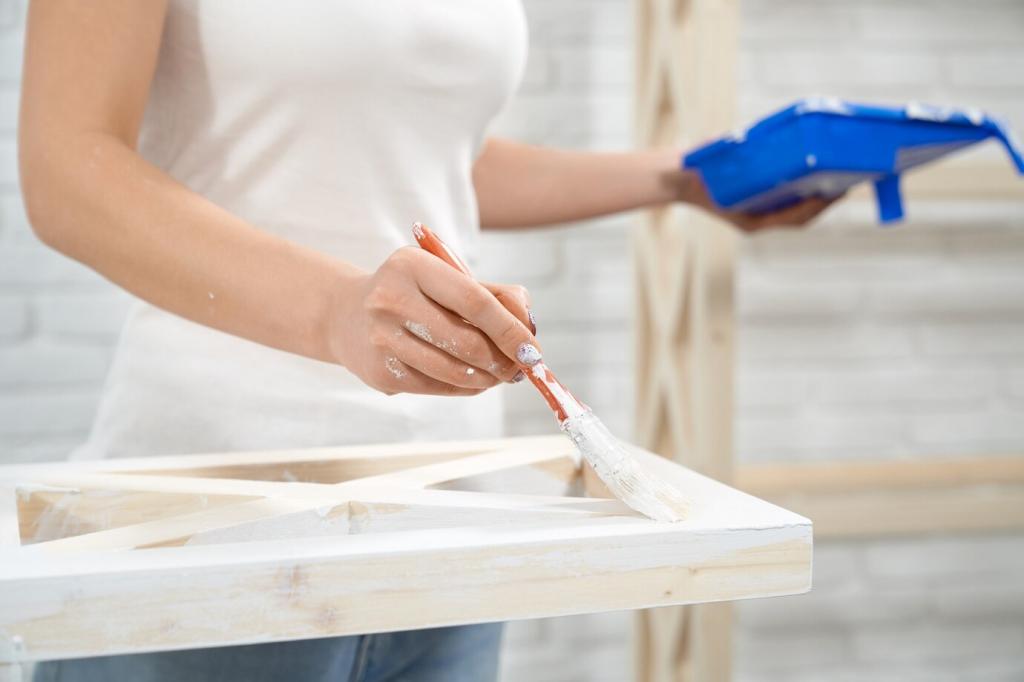Understanding Different Wood Types in Restoration: A Restorer’s Guide
Chosen theme: Understanding Different Wood Types in Restoration. Step into a restorer’s mindset where species truly matter—grain, density, and history guide every choice you make as you revive oak sideboards, pine chests, mahogany writing desks, and walnut chairs with confidence and care.
Reading the Wood: Grain, Density, and Character
Oak’s bold rays and ring-porous structure telegraph strength and a love of open-grain finishes. Walnut’s chocolate tones hide tight, elegant pores. Mahogany displays shimmering chatoyance with interlocked grain that rewards dyes and shellac when handled with patient, whisper-light sanding.
Reading the Wood: Grain, Density, and Character
Pine and fir dent easily yet flex under stress, making them forgiving for structural repairs. Their diffuse, resin-rich fibers can blotch under stains, but with the right conditioner and gentle scraping, they glow warmly and invite touch without masking their honest knots and character.
Reading the Wood: Grain, Density, and Character
Dense woods resist dents but chip if rushed, demanding sharp edges and controlled passes. Softer woods crush under clamps and need cauls. Even your solvent choice changes; dense pores slow penetration, while softwoods can drink too deeply, altering color and complicating later finish steps.
Species Identification in Vintage Pieces
Examine end grain under magnification. Oak reveals large earlywood pores and striking rays; walnut shows smaller, more uniform pores; mahogany’s pores align neatly with occasional ripple from interlocked fibers. A single careful slice or sanded end can reveal more truth than a dozen guesses.

Finishes That Honor the Species
Oak’s tannins react dramatically to water-based dyes and iron acetate, creating rich, historic tones. Walnut starts dark but can fade toward amber; a light dye under oil rejuvenates depth without muddying figure. Always test on hidden areas, because tannin content varies by age and origin.

Hardwoods: Tight Joints and Slow Cures
In oak and walnut, precision beats pressure. Overclamping can starve joints of glue. Use fresh, appropriate adhesive and allow generous cure time for dense fibers. Clean squeeze-out early, but avoid flooding open pores, which can interfere with dye uptake and leave halos around repairs.

Softwoods: Compression, Dent Raising, and Gentle Heat
Crushed pine fibers often rebound with steam and patience. Lay a damp cloth and use a warm iron to coax dents upward. Avoid harsh scraping that tears earlywood. When patching knots, select grain that mirrors growth rings, then plane lightly to prevent fuzzing and washboarding.

Veneer Species and Substrate Pitfalls
Mahogany or walnut veneers over softwood cores demand low-moisture, even pressure gluing. Test hot hide glue for reversible bonds on antiques. Align figure and color carefully; mismatched veneer screams later. A small story: one saved writing desk hinged on a single, perfectly oriented ribbon stripe.
Era-Specific Woods and What They Tell You
Many Victorian pieces favored Cuban and Honduran mahogany finished with shellac. Respect that legacy with reversible finishes and subtle color builds. Avoid heavy polyurethane that flattens depth. Thin, layered polish lets light dance along ribboned grain, echoing the original maker’s intention and methods.
Era-Specific Woods and What They Tell You
Mission and Arts and Crafts furniture celebrate open grain and quarter-sawn rays. Fumed oak or dye-plus-wax finishes highlight structure without plastic sheen. When repairing, maintain ray fleck orientation; even small patches should honor the board’s cut, keeping that honest, tactile presence intact.

Sustainability, Ethics, and Responsible Sourcing

Old-growth character is hard to fake. Reclaimed oak or pine often carries mineral streaks, tight rings, and timeworn color that blend seamlessly. Mill thoughtfully and pre-age patches with light, heat, or tannin reactions. Let the repair disappear into history rather than shout from the surface.
